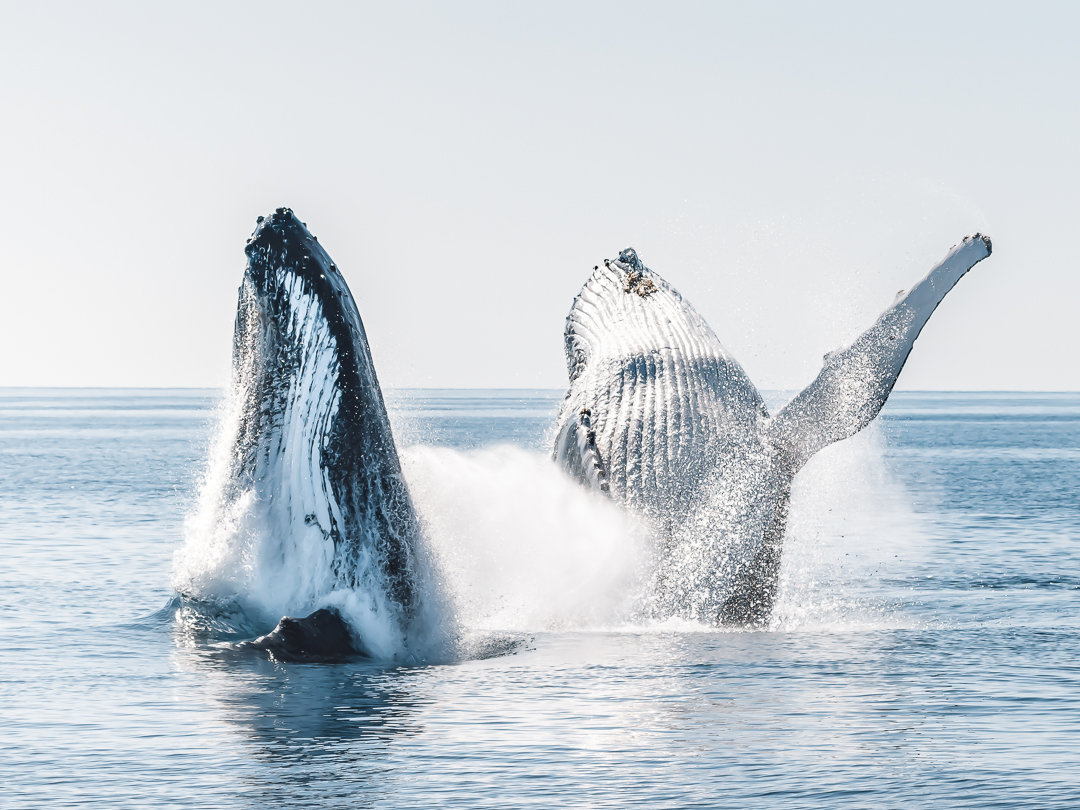HERVEY BAY WHALES – THE BEST PLACE IN QUEENSLAND TO SEE THE WHALES
You may be wondering why Hervey Bay is so special for whale watching and a must on your bucket list? From June through to October, Humpback Whales come to rest, play and teach their new calves in the beautiful, sheltered waters of Platypus Bay on the western side of K’gari (Fraser Island).
Known as the Whale watching capital of Australia, Hervey Bay is famous for the beautiful beaches and abundant marine life along its coastline. For four months each year from July to October they stop here to feed and play with their calves, showing a magnificent display of breaching, spy hopping, tail slapping, and interactive social behaviour.
Awarded the first World Whale Heritage site due to the region’s commitment to conservation and protection, there’s nowhere better to bring your family and friends for an unforgettable day out on the water.
ABOUT THE WHALES
– More the 8,000 giant humpbacks taking a ‘breather’ on their annual migration south after calving in the warm waters of the Great Barrier Reef come to rest and socialise in the protected waters of Platypus Bay between World Heritage listed K’gari (Fraser Island) and the mainland of the South East Queensland coast.
– In May, they leave their rich feeding grounds in Antarctica and undergo a 5000 km migration to their breeding grounds north of K’gari (Fraser Island), in the warmer waters of the Whitsundays.
– At the beginning of the season, adult individuals are likely to be seen, while mothers and their calves arrive towards the end.
– Hervey Bay, in particular, Platypus Bay is known as a ‘whale nursery’ for resting and socialising, for about a week, before they undertake their long migration back to Antarctica.
– Hervey Bay is one of the few places in the world where multiple mothers and calves join together in one pod.
– The gestation period for humpbacks is approximately 11-months and once born, calves accompany mum on the annual migration, nursing until at least their first birthday.
– Humpback whales have the longest migration on the Planet with some populations travelling as far as 8,000 kilometres worth of open ocean each year.
– Humpback whale song can last for hours. Performed by the males, the songs are typically heard during the breeding season. It is not known why they sing, some marine biologist suggest that it is used to establish identity and dominance, while others say the songs are a mating call.
– Wally Franklin, of Southern Cross University, has been studying humpback whale behaviour with the Oceania Project at Hervey Bay for 30 years. He says that humpback whales sleep with one eye open – closing down one side of their brain to sleep with the other one stands to watch.
WHALE TALK
– SPY HOP: when a whale lifts its head vertically out of the water to ‘spy’ its surroundings at the surface
– MUGGING: When whales approach and interact with a vessel, sometimes for hours, leaving the vessel unable to move. Hervey Bay is famous for muggings.
– FLUKE SLAP: When a whales slaps the surface with its tail fluke
– BREACH: When the whale hauls out of the water
– PECTORAL SLAP: Surface slapping with the humpback’s pectoral fin.
– HEAD LUNGE: When the humpback lunges headfirst out of the water vertically.
ABOUT THE WHALE HERITAGE SITE
– The site is defined by the existing Great Sandy Marine Park boundary, with the primary area being Hervey Bay and Platypus Bay.
– The Great Sandy Marine Park was awarded Biosphere Reserve status by UNESCO in 2009.
– The site also encompasses the mainland township of Hervey Bay in the south to Bundaberg in the north and the sheltered western coastline of World Heritage listed K’gari (Fraser Island).
– The site is a 1,390 square-kilometre area and covers about 23 percent of the Great Sandy Marine Park, spanning from Rooneys Point, across to Burrum Heads, and as far south as Big Woody Island.
– Hervey Bay is most famous for humpbacks, but Southern right whales, minke whales, melon-headed whales, pilot whales and sperm whales have all been sighted in the area.
– This area is managed closely by the Queensland Parks and Wildlife Service (QPWS) under the Queensland State Government Department of Environment and Science.
K’gari Salty Safaris offer you the opportunity to experience these majestic animals and unforgettable sights from our small group, fast 11m RIB, Wipeout. Be sure to check out our gallery and blog posts for more information about our tours, the area and marine life.
